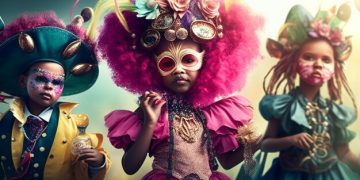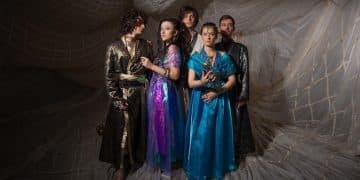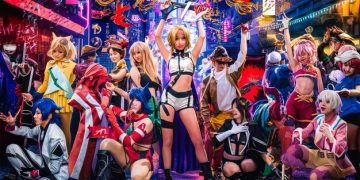The Ultimate Guide to Cosplay: Transforming into Your Favorite Characters
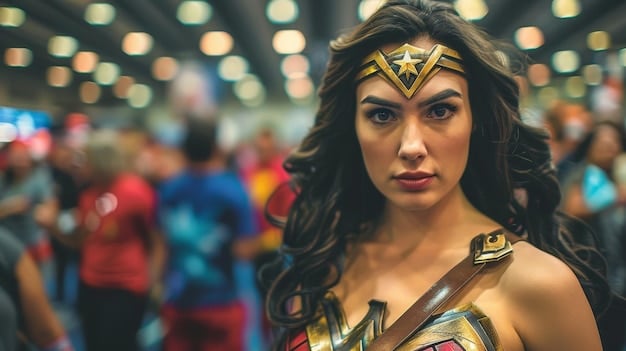
Cosplay, short for “costume play,” involves transforming into beloved characters from various sources like video games, anime, comics, and movies, requiring creativity, craftsmanship, and a passion for bringing fictional characters to life.
Unleash your inner hero and dive into the world of cosplay! Cosplay is more than just dressing up; it’s an art form, a community, and a way to express your love for your favorite characters.
What is Cosplay? A Deep Dive into the Art of Costume Play
Cosplay, a portmanteau of “costume play,” is a performance art where individuals don costumes and accessories to represent a specific character. Originating in the science fiction conventions of the late 1930s and gaining popularity through Japanese anime and manga culture, cosplay has evolved into a global phenomenon. But what truly defines cosplay, and why is it so captivating?
At its core, cosplay is about embodying a character. It involves meticulous attention to detail in recreating costumes, hairstyles, and even mannerisms. Cosplayers often spend countless hours crafting their outfits, learning about their chosen characters, and practicing poses or performances to truly bring them to life.
The History of Cosplay
While the exact origins are debated, many trace the roots of cosplay back to Forrest J Ackerman, a science fiction fan who attended the 1939 World Science Fiction Convention in a self-made costume. This act of dressing up as a character sparked interest, and the trend gradually grew.
The term “cosplay” itself is attributed to Nobuyuki Takahashi, a Japanese journalist who attended the 1984 World Science Fiction Convention in Los Angeles. He coined the term to describe the costumed fans he observed, blending “costume” and “play” into a single, memorable word.
Why People Cosplay
The motivations behind cosplay are varied and deeply personal. For some, it is a creative outlet, allowing them to express their artistic skills through costume design and construction. For others, it’s a way to connect with a community of like-minded individuals who share a passion for specific fandoms. Still others find empowerment and confidence in embodying characters they admire.
- Expressing Creativity: Cosplay provides a canvas for artistic expression, from sewing and crafting to makeup and prop design.
- Connecting with Fandoms: It’s a way to celebrate and share love for specific characters and stories.
- Building Community: Cosplay events offer opportunities to meet fellow fans and forge lasting friendships.
- Personal Growth: Cosplaying can boost confidence, improve social skills, and foster a sense of self-discovery.
In conclusion, cosplay is a multifaceted art form that combines creativity, community, and a love for storytelling. It’s a way for individuals to step into the shoes of their favorite characters and share their passion with the world.
Getting Started with Cosplay: A Beginner’s Guide
Intrigued by cosplay but unsure where to begin? Starting your cosplay journey can feel overwhelming, but with a little guidance and planning, you can create your first costume and confidently enter the world of cosplay. Here’s a step-by-step guide to getting started.
The first step is to choose a character that resonates with you. Consider your skill level, budget, and personal preferences. Select a character whose costume you find visually appealing and whose personality you connect with.
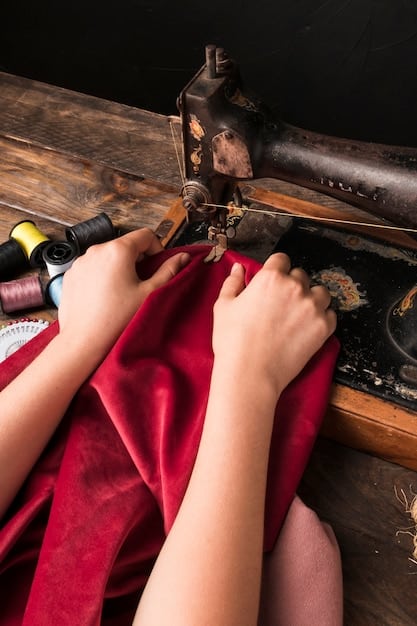
Choosing Your Character
Choosing the right character is paramount. Start with characters you genuinely admire. Do you love their strength, their wit, or their unique style? Selecting a character you’re passionate about will make the entire process more enjoyable.
Also, be realistic about your skill level. Starting with a simple costume can help you build confidence and learn new skills without becoming discouraged. As you gain experience, you can tackle more complex designs.
Planning Your Costume
Once you’ve chosen your character, it’s time to start planning your costume. Gather reference images from various angles to understand the details of the outfit. Break down the costume into individual components and identify the materials you’ll need.
Consider whether you’ll be making the costume yourself, commissioning a professional, or purchasing pre-made components. Each option has its advantages and disadvantages in terms of cost, time, and skill requirements.
Essential Cosplay Skills
Developing basic cosplay skills can greatly enhance your ability to create impressive costumes. Learning to sew, craft with foam, style wigs, and apply makeup are all valuable assets.
- Sewing: Mastering basic sewing techniques will allow you to create custom clothing and alter existing garments.
- Foam Crafting: Foam is a versatile material for creating armor, props, and other costume elements.
- Wig Styling: Learning to style wigs can transform your appearance and accurately represent your chosen character’s hairstyle.
- Makeup: Makeup is essential for enhancing your features and achieving the desired look for your character.
In summary, starting with cosplay doesn’t have to be daunting. With a little planning, realistic expectations, and a willingness to learn, you can embark on an exciting journey of self-expression and creativity.
Mastering Costume Construction: Techniques and Materials
One of the most rewarding aspects of cosplay is the process of bringing a costume to life. Mastering costume construction techniques and understanding different materials are crucial for creating high-quality and accurate cosplays. Let’s delve into some essential techniques and materials.
Sewing is a fundamental skill for any cosplayer. Understanding basic stitches, pattern making, and fabric types will allow you to create custom garments that fit perfectly and accurately reflect your character’s attire.
Working with Fabrics
Choosing the right fabric is essential for achieving the desired look and feel of your costume. Consider factors such as texture, weight, drape, and color when selecting materials. Common fabrics used in cosplay include cotton, polyester, spandex, and various types of faux leather.
Experiment with different fabrics to understand their properties and how they behave when sewn, draped, or manipulated. Practice sewing techniques such as seams, hems, and darts to create clean and professional-looking garments.
Crafting with Foam
Foam is a versatile material for creating armor, props, and other structural elements of your costume. EVA foam, in particular, is popular due to its lightweight, durability, and ease of shaping.
Learn to cut, shape, and seal foam to create intricate designs. Use heat guns to mold foam into curves and contours, and apply adhesives to bond pieces together. Painting and weathering techniques can add realistic details to your foam creations.
3D Printing for Cosplay
3D printing has revolutionized cosplay by allowing the creation of complex and highly detailed props and accessories. From helmets and weapons to intricate jewelry, 3D printing offers unparalleled precision and customization.
- Design and Modeling: Learn to use 3D modeling software to create digital designs of your desired props.
- Printing Process: Understand the different 3D printing technologies and materials available.
- Post-Processing: Master techniques for cleaning, sanding, and painting 3D printed parts to achieve a professional finish.
In conclusion, mastering costume construction involves a blend of technical skills and creative problem-solving. By understanding different techniques and materials, you can bring your cosplay visions to life with confidence and precision.
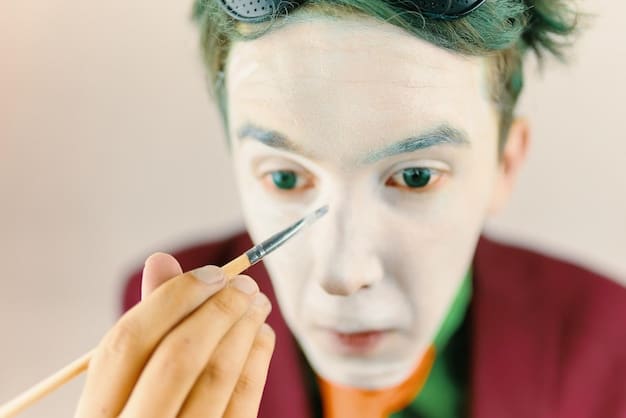
Cosplay Makeup and Wig Styling: Achieving the Perfect Look
Cosplay is more than just the costume; it’s about capturing the essence of a character from head to toe. Makeup and wig styling are essential components that can transform your appearance and bring your chosen character to life. Let’s explore some techniques for achieving the perfect look.
Makeup plays a vital role in enhancing your features and creating the desired expression for your character. Learn to use contouring, highlighting, and color correction techniques to sculpt your face and emphasize specific features.
Essential Makeup Techniques
Mastering basic makeup techniques is essential for any cosplayer. Start with a clean base, using primer to create a smooth surface for your foundation. Choose a foundation that matches your skin tone and provides the desired coverage.
Learn to contour and highlight your face to create depth and dimension. Use eyeshadow to define your eyes and create the desired shape and color. Don’t forget to groom your eyebrows and apply lipstick or lip gloss to complete your look.
Wig Styling Tips and Tricks
Wigs are an essential part of many cosplays, allowing you to accurately replicate your character’s hairstyle without altering your natural hair. Choose a wig that matches the color, length, and style of your character’s hair.
Learn to style wigs using techniques such as teasing, cutting, and heat styling. Use hairspray and other styling products to hold the wig in place and create the desired shape. Don’t be afraid to experiment and try new techniques to achieve the perfect look.
Creating Special Effects
For characters with unique features or special effects, consider using prosthetic makeup or special effects techniques. You can create scars, wounds, horns, or other embellishments using latex, silicone, or other materials.
- Prosthetic Application: Learn to apply and blend prosthetic pieces seamlessly into your skin.
- Painting and Detailing: Use makeup and paint to create realistic textures and colors on your prosthetic pieces.
- Removal and Care: Understand how to safely remove prosthetic makeup and care for your skin afterwards.
In summary, cosplay makeup and wig styling are powerful tools for transforming your appearance and capturing the essence of your chosen character. By mastering essential techniques and experimenting with different looks, you can create stunning cosplays that are both accurate and visually appealing.
Cosplay Photography and Presentation: Showcasing Your Creation
You’ve poured hours into crafting your costume, perfecting your makeup, and styling your wig. Now it’s time to showcase your creation to the world. Cosplay photography and presentation are essential for capturing the beauty and artistry of your cosplay and sharing it with others.
Photography is a powerful tool for documenting your cosplay and sharing it online. Whether you’re taking photos yourself or working with a professional photographer, there are several factors to consider to capture the best possible images.
Posing and Expression
Posing and expression are key to conveying the personality and essence of your character. Practice different poses and facial expressions in front of a mirror to find what works best for you.
Consider the character’s personality and how they would typically behave in different situations. Use your body language and facial expressions to convey these traits and bring your character to life.
Choosing a Location
The location of your photoshoot can greatly enhance the overall impact of your cosplay. Choose a location that complements your character’s background and setting.
For example, if you’re cosplaying a fantasy character, consider shooting in a forest or park. If you’re cosplaying a futuristic character, look for urban settings with modern architecture. Consider the lighting and background to ensure that your cosplay stands out.
Online Presentation
Once you have your photos, it’s time to share them online. Choose the right platforms to reach your target audience and showcase your cosplay in the best possible light.
- Social Media: Share your photos on platforms like Instagram, Facebook, and Twitter.
- Cosplay Communities: Post your photos on cosplay-specific websites and forums.
- Portfolio Websites: Create a portfolio website to showcase your best work.
In conclusion, cosplay photography and presentation are essential for sharing your creations with the world and connecting with other fans. By mastering posing, choosing the right locations, and presenting your work effectively, you can showcase the beauty and artistry of your cosplay and inspire others to join the community.
The Cosplay Community: Connecting with Fellow Fans
Cosplay is more than just a solo activity; it’s a vibrant and supportive community of passionate individuals who share a love for characters, creativity, and self-expression. Connecting with fellow fans can greatly enhance your cosplay experience and provide opportunities for growth and friendship.
Attending conventions and events is a great way to meet other cosplayers and immerse yourself in the cosplay community. These events offer opportunities to showcase your costumes, participate in contests, attend workshops, and connect with fellow fans.
Finding Local Cosplay Groups
Joining a local cosplay group is a great way to connect with other cosplayers in your area. These groups often organize events, workshops, and photoshoots, providing opportunities to collaborate and learn from each other.
Search online for cosplay groups in your area or ask for recommendations from fellow cosplayers. Attend group meetings and events to meet new people and find potential collaborators.
Participating in Online Communities
Online communities are a valuable resource for connecting with cosplayers from around the world. Platforms like forums, social media groups, and chat rooms offer opportunities to share your work, ask for advice, and connect with like-minded individuals.
Be respectful and supportive of other cosplayers, and contribute to the community by sharing your knowledge and experiences. Remember that cosplay is about having fun and celebrating your love for your favorite characters.
Cosplay Etiquette and Respect
Like any community, cosplay has its own set of etiquette and guidelines. Respecting other cosplayers, their costumes, and their personal space is essential for creating a positive and welcoming environment.
- Asking for Permission: Always ask for permission before taking photos of other cosplayers or touching their costumes.
- Being Mindful of Space: Be aware of your surroundings and avoid blocking pathways or interfering with event activities.
- Offering Support: Provide positive feedback and encouragement to other cosplayers.
In summary, the cosplay community is a supportive and welcoming space where individuals can connect with fellow fans, share their passion, and grow as cosplayers. By attending events, joining groups, and participating in online communities, you can build lasting friendships and enhance your cosplay experience.
| Key Point | Brief Description |
|---|---|
| 🎭 What is Cosplay? | Dressing up as characters, embodying their traits. |
| 🧵 Costume Construction | Techniques for creating costumes, like sewing and foam crafting. |
| ✨ Makeup & Styling | Applying makeup and styling wigs to match the character. |
| 📸 Photography & Presentation | Showcasing your cosplay through photos and online. |
FAQ
▼
Cosplay, or “costume play,” is the art of dressing up as characters from anime, comics, games, and movies. It involves detailed costume creation, embodying the character’s personality, and often attending conventions to showcase your work.
▼
Choose a character you love and whose costume is within your skill level. Starting with simpler designs helps you build confidence. Pick someone recognizable and enjoy the process of bringing them to life.
▼
Essentials include sewing skills, understanding fabric types, foam crafting, and basic prop making. Budget is also crucial. Tools like sewing machines, hot glue guns, and paint are indispensable for crafting costumes effectively.
▼
Makeup is extremely important in cosplay. It helps you enhance features, create character-specific looks, and transform your appearance. Skills in contouring, highlighting, and special effects makeup can significantly elevate your cosplay.
▼
Practice character poses and expressions. Optimize your costume fit and details. Select a backdrop relevant to the character during photoshoots. Share high-quality photos online through social media or community forums to showcase your hard work.
Conclusion
In conclusion, cosplay is a dynamic and rewarding hobby that combines creativity, skill, and community. Whether you’re a seasoned cosplayer or just starting out, embracing the art of costume play offers endless opportunities for self-expression and connection. Dive in, explore your favorite characters, and let your imagination soar!
